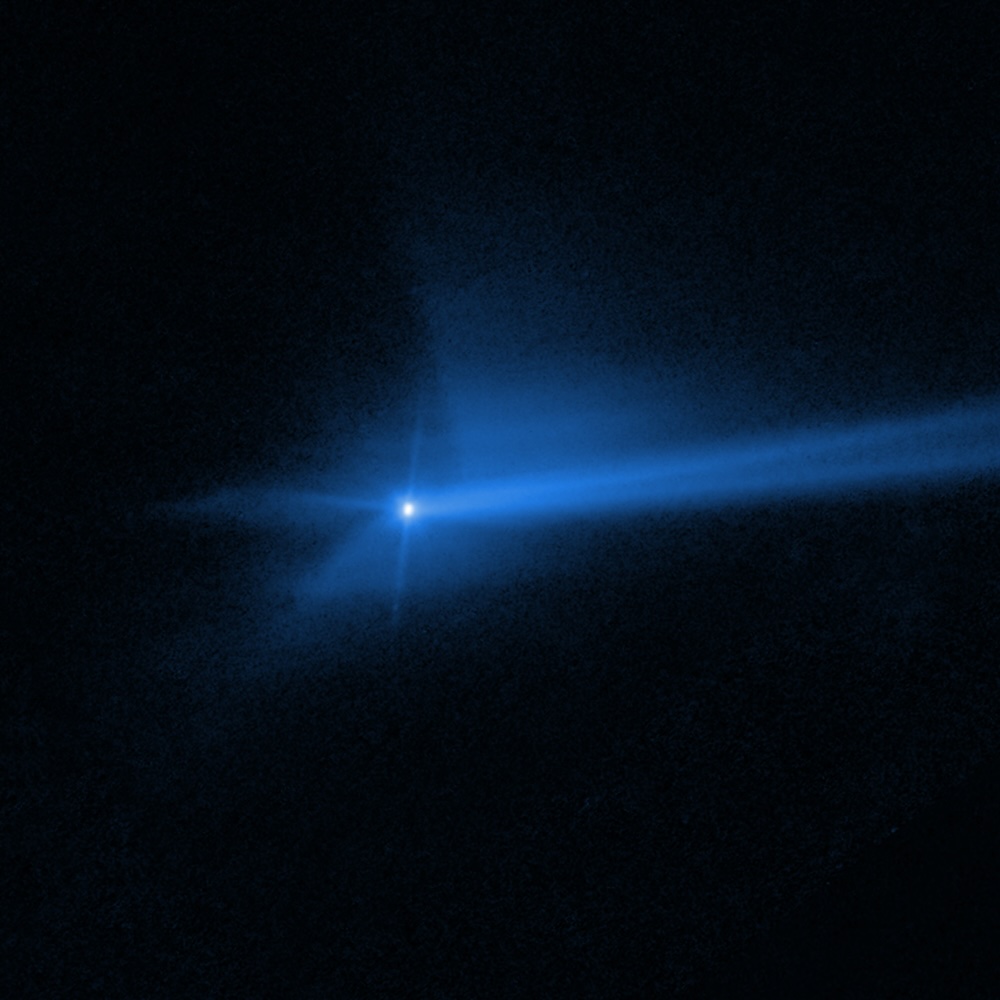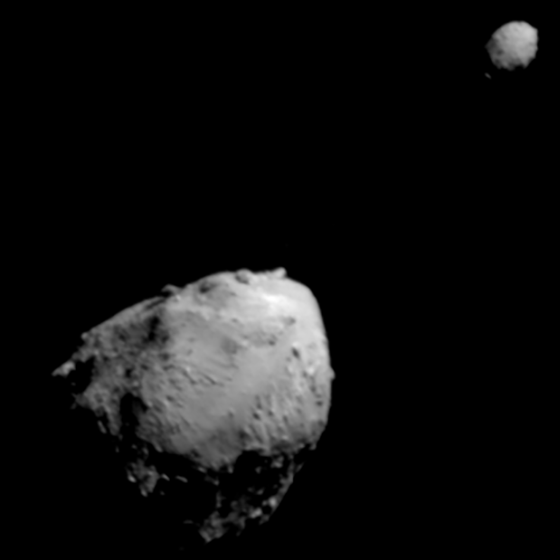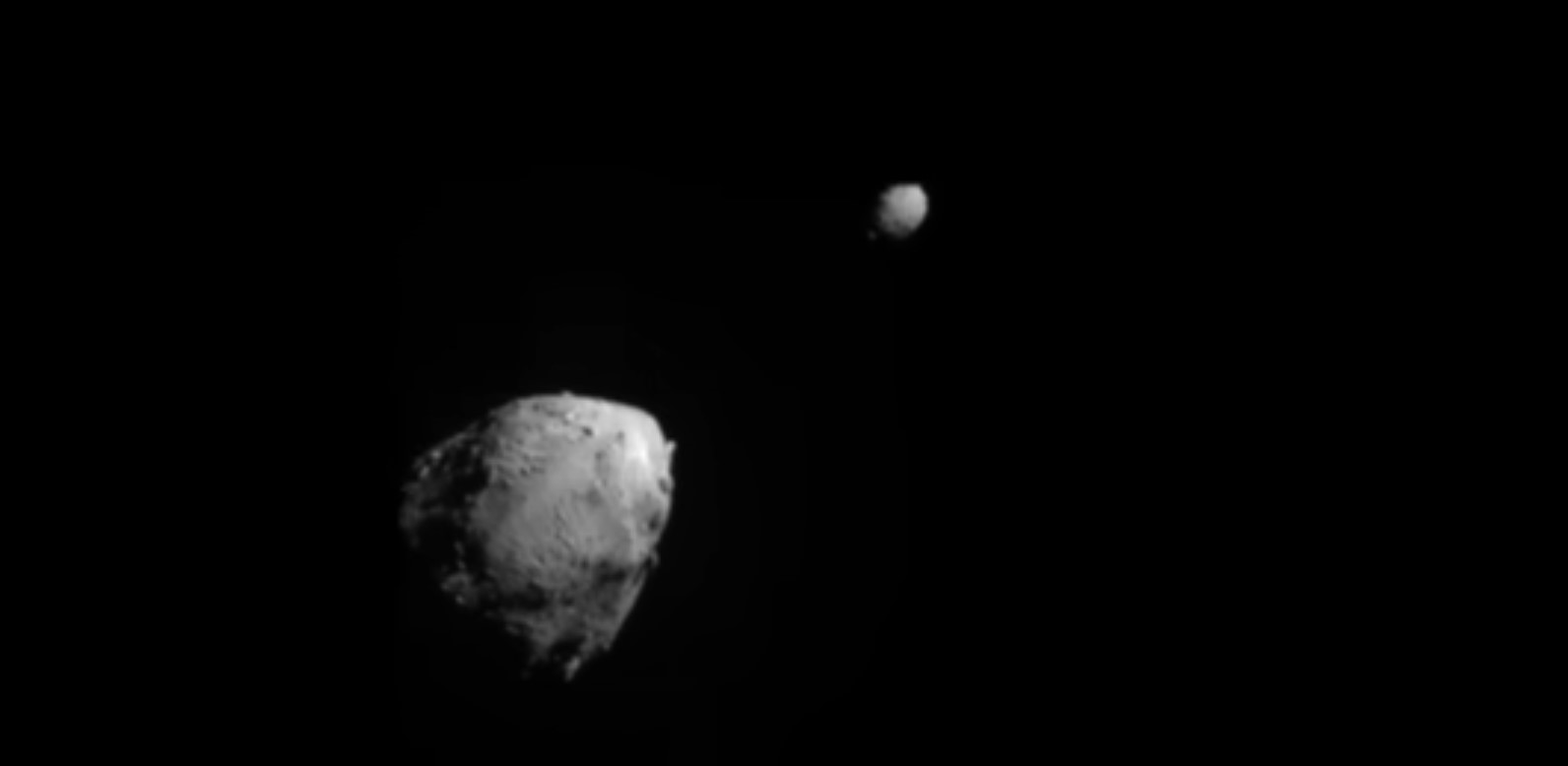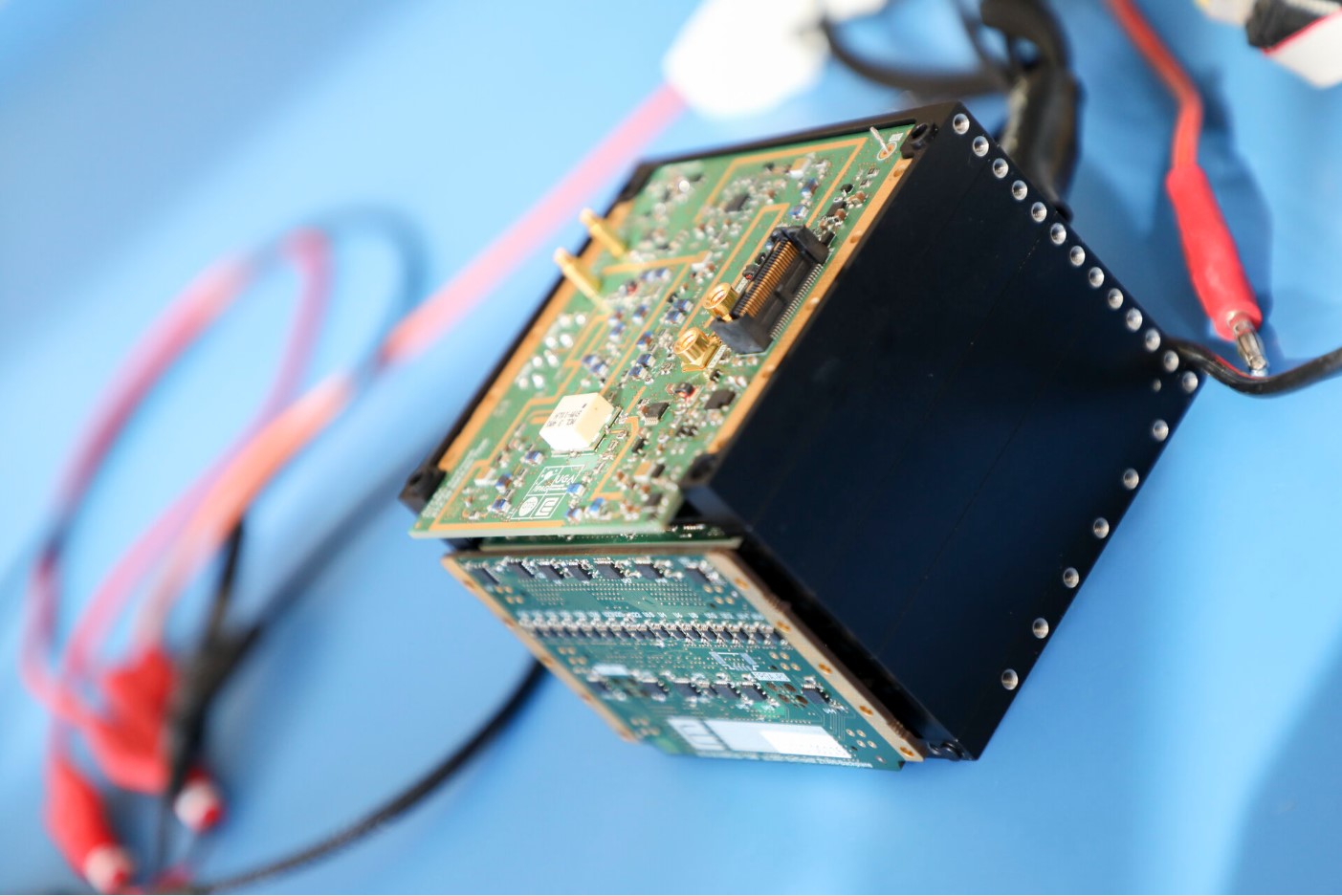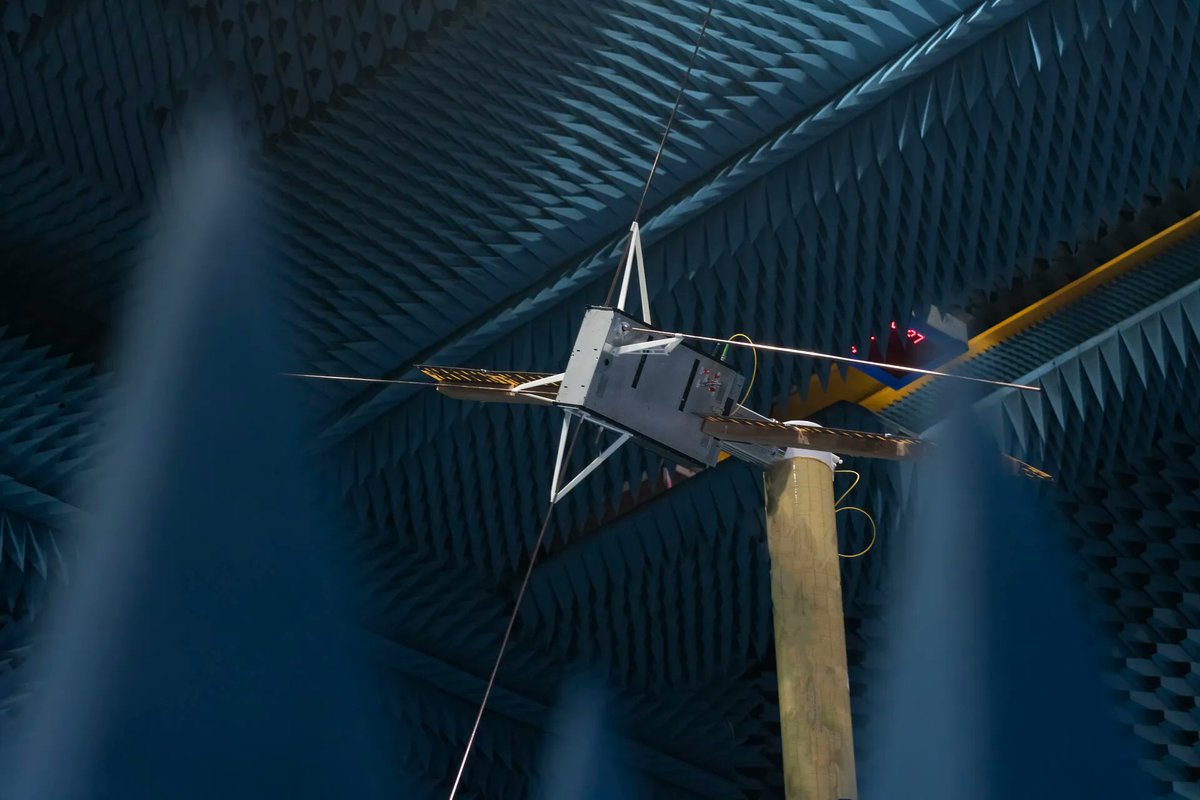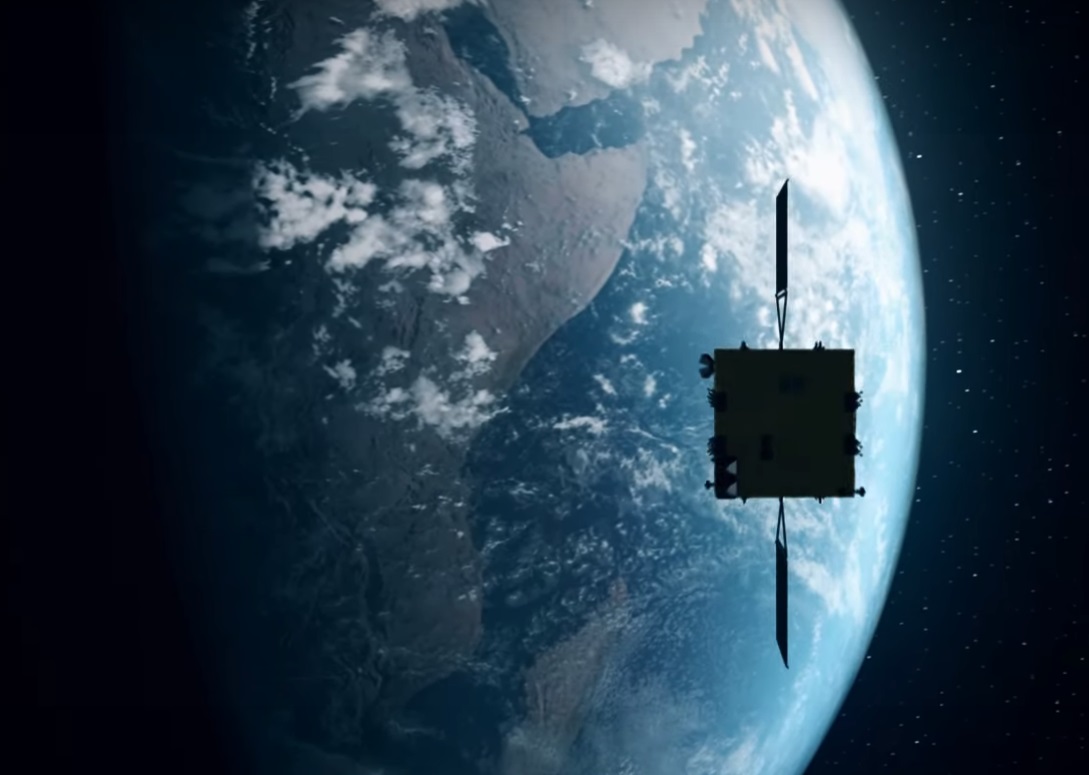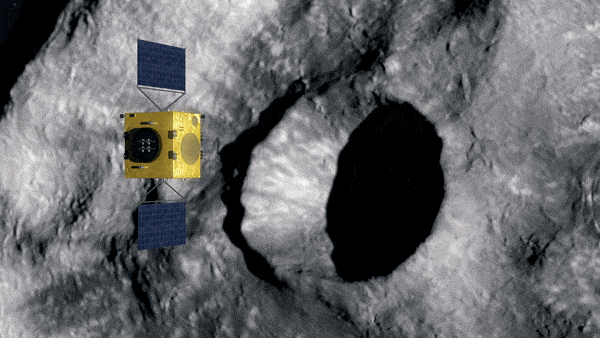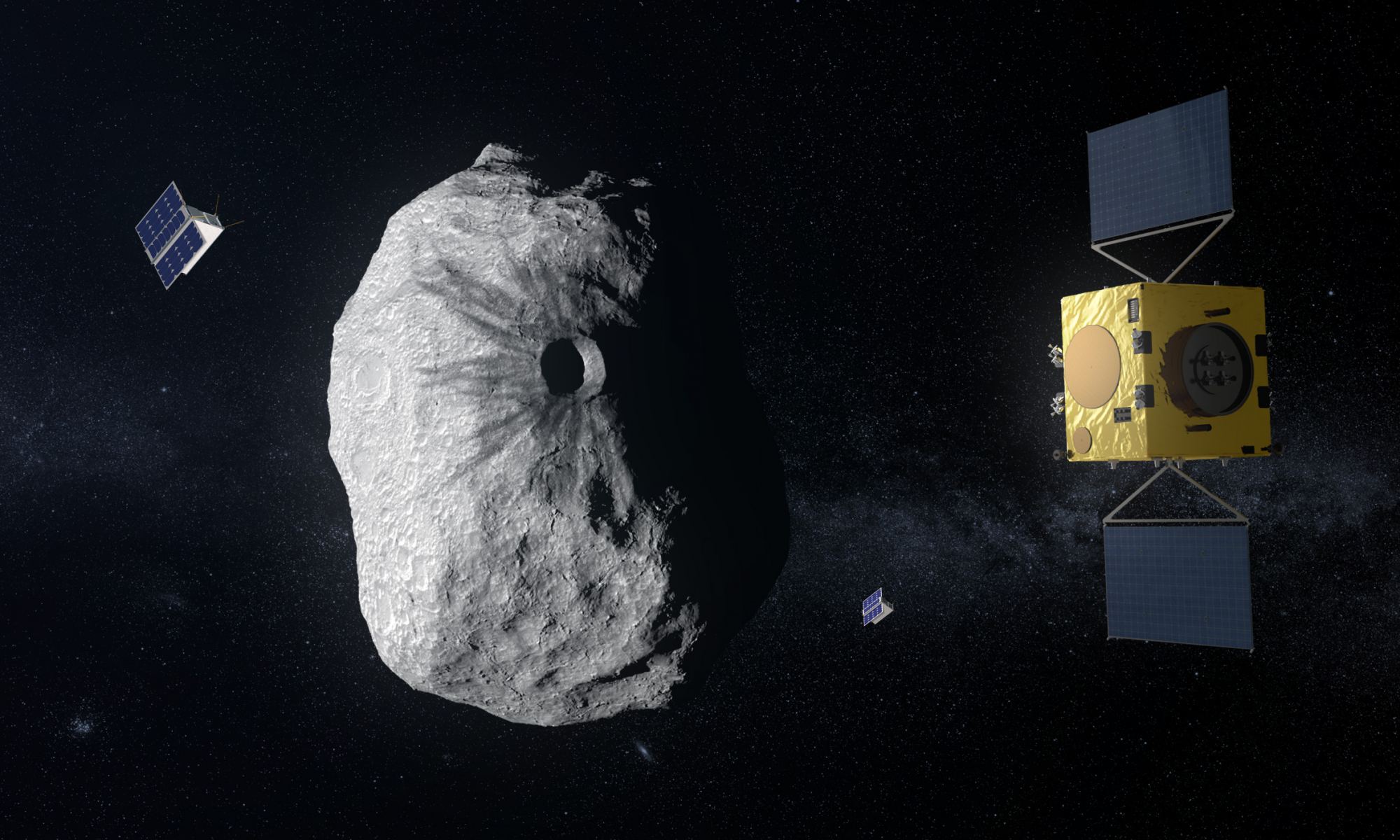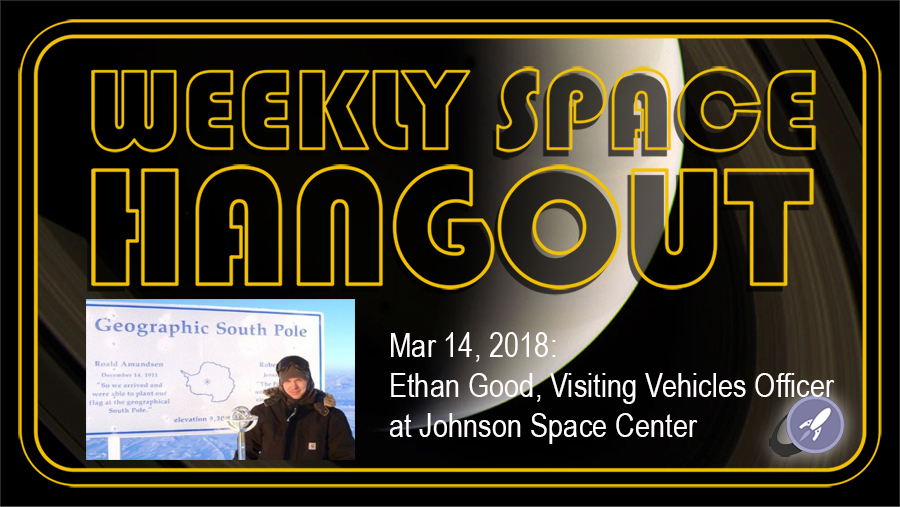It was a $325 million dollar project that was intentionally smashed to smithereens in the interest of one day, saving humanity. The DART mission (Double Asteroid Redirection Test) launched in November 2021 on route to asteroid Dimorphos. Its mission was simple, to smash into Dimorphos to see if it may be possible to redirect it from its path. On impact, it created a trail of debris from micron to meter sized objects. A new paper analyses the debris field to predict where they might end up.
Continue reading “What Happened to All Those Boulders Blasted into Space by DART?”Dimorphos is Probably a Piece of Didymos
Last September, NASA purposefully smashed a spacecraft into Dimorphos, a 160m-wide space rock orbiting a larger asteroid named Didymos. The goal of the mission, called DART (the Double Asteroid Redirection Test), was to demonstrate humanity’s ability to redirect hazardous asteroids away from Earth. That part of the mission was a success above and beyond all expectations. But now scientists are also learning more about the origins of the two asteroids. A study conducted in the wake of the DART impact found that Dimorphos is made from the same material as Didymos, and that the pair of asteroids likely originated from a single body.
Continue reading “Dimorphos is Probably a Piece of Didymos”Didymos is Spinning So Quickly That Rocks are Detaching at its Equator and Going Into Orbit
Asteroid Didymos is spitting rocks out into space.
Last fall, when NASA’s DART mission impacted Didymos’ moon Dimorphos in a dramatic (and successful) attempt to change the object’s orbit, DART got a quick look at the Didymos system before the probe was purposefully smashed to pieces.
Alongside demonstrating the capability to prevent future asteroid strikes on Earth, DART also gathered new information about the dynamics of the pair of asteroids. The data collected suggests that Didymos is actively throwing material out into space, and there are likely millions of other small asteroids doing the same across the Solar System, all the time.
Continue reading “Didymos is Spinning So Quickly That Rocks are Detaching at its Equator and Going Into Orbit”Astronomers are Working on a 3D map of Cosmic Dawn
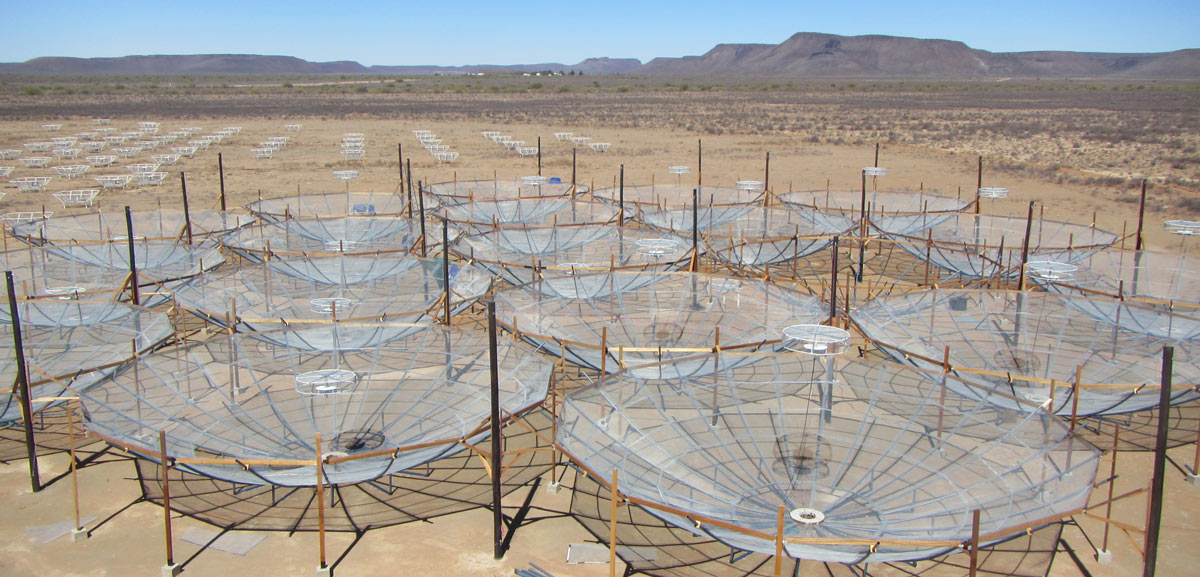
The frontiers of astronomy are being pushed regularly these days thanks to next-generation telescopes and scientific collaborations. Even so, astronomers are still waiting to peel back the veil of the cosmic “Dark Ages,” which lasted from roughly 370,000 to 1 billion years after the Big Bang, where the Universe was shrouded with light-obscuring neutral hydrogen. The first stars and galaxies formed during this same period (ca. 100 to 500 million years), slowly dispelling the “darkness.” This period is known as the Epoch of Reionization, or as many astronomers call it: Cosmic Dawn.
By probing this period with advanced radio telescopes, astronomers will gain valuable insights into how the first galaxies formed and evolved. This is the purpose of the Hydrogen Epoch of Reionization Array (HERA), a radio telescope dedicated to observing the large-scale structure of the cosmos during and before the Epoch of Reionization located in the Karoo desert in South Africa. In a recent paper, the HERA Collaboration reports how it doubled the array’s sensitivity and how their observations will lead to the first 3D map of Cosmic Dawn.
Continue reading “Astronomers are Working on a 3D map of Cosmic Dawn”The Smallest Radar Ever Sent to Space Will Probe the Interior of Dimorphos After its Impact From DART
Are miniature probes the future of deep space exploration?
Continue reading “The Smallest Radar Ever Sent to Space Will Probe the Interior of Dimorphos After its Impact From DART”An Upcoming Asteroid Mission Will be Able to Peer 100 Meters Under the Surface
Engineers only get one shot at making a spacecraft work as intended. Or at least they only get one shot in space. In the preparation leading up to that final, climactic moment, there are typically thousands of hours of tests run on numerous systems and subsystems. If all goes well, it bodes well for the mission’s overall success, but if problems arise, it’s much easier to address them on the ground than while a spacecraft is already orbiting. A model of a new spacecraft known as Juventas just completed a significant testing milestone – passing testing in a room known as an anechoic chamber.
Continue reading “An Upcoming Asteroid Mission Will be Able to Peer 100 Meters Under the Surface”ESA Recruits Amateur Astronomers Ahead of Hera Asteroid Mission
The European Space Agency is looking to recruit amateur astronomers to help characterize possible secondary targets for the upcoming Hera asteroid rendezvous mission.
Continue reading “ESA Recruits Amateur Astronomers Ahead of Hera Asteroid Mission”Europe and US are Going to Try and Deflect an Asteroid
Next week, asteroid researchers and spacecraft engineers from all around the world will gather in Rome to discuss the latest in asteroid defense. The three-day International AIDA Workshop, which will run from Sept. 11th to 13th, will focus on the development of the joint NASA-ESA Asteroid Impact Deflection Assessment (AIDA) mission.
The purpose of this two-spacecraft system is to deflect the orbit of one of the bodies that make up the binary asteroid Didymos, which orbits between Earth and Mars. While one spacecraft will collide with a binary Near-Earth Asteroid (NEA), the other will observe the impact and survey the crash site in order to gather as much data as possible about this method of asteroid defense.
Continue reading “Europe and US are Going to Try and Deflect an Asteroid”ESA is Planning a Mission to the Smallest Spacerock Ever Visited: the Moon of an Asteroid
For some small minority of humans, Death By Asteroid is a desirable fate. The idea probably satisfies their wonky Doomsday thinking. But for the rest of us, going out the same way the dinosaurs did would just be embarrassing. Thankfully, the ESA’s Hera mission will visit the smallest spacerock ever, and will help us avoid going the way of the dinosaurs.
For added kicks, it will forestall the happiness of any over-earger doomsday cultists, and the rest of us can revel in their existential anguish.
Continue reading “ESA is Planning a Mission to the Smallest Spacerock Ever Visited: the Moon of an Asteroid”Weekly Space Hangout: March 14, 2018: Ethan Good, Visiting Vehicles Officer at JSC
Hosts:
Fraser Cain (universetoday.com / @fcain)
Dr. Paul M. Sutter (pmsutter.com / @PaulMattSutter)
Dr. Kimberly Cartier (KimberlyCartier.org / @AstroKimCartier )
Dr. Morgan Rehnberg (MorganRehnberg.com / @MorganRehnberg & ChartYourWorld.org)
Special Guests:
In his current position as Visiting Vehicles Officer in Mission Control at JSC, Ethan Good supports cargo and (eventually) commercial crew flights to/from the International Space Station. Previously, Ethan completed three summer-winter contracts as a Research Scientist at Amundsen-Scott South Pole Station, as well as served as commander of a four-person crew during a two-week HERA study in 2015.
Announcements:
If you would like to join the Weekly Space Hangout Crew, visit their site here and sign up. They’re a great team who can help you join our online discussions!
We record the Weekly Space Hangout every Wednesday at 5:00 pm Pacific / 8:00 pm Eastern. You can watch us live on Universe Today, or the Weekly Space Hangout YouTube page – Please subscribe!

